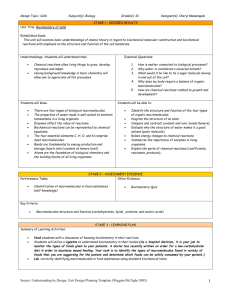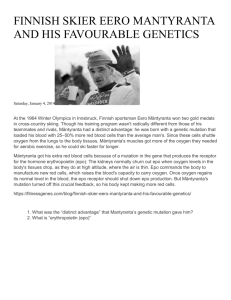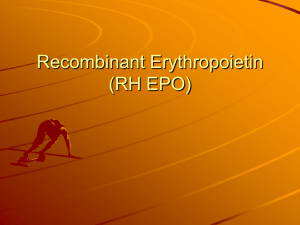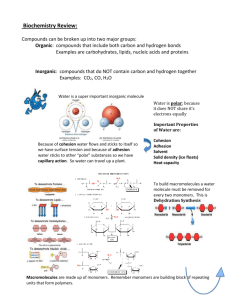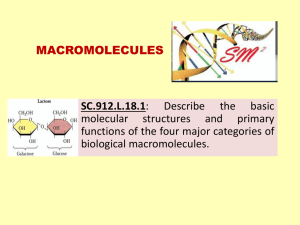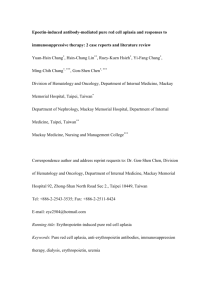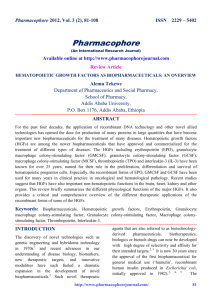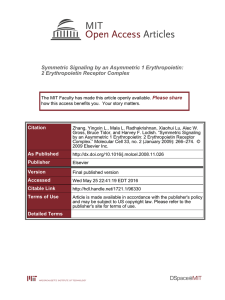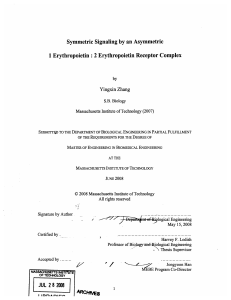Edward J. Flynn, Ph.D. Department of Pharmacology and
advertisement
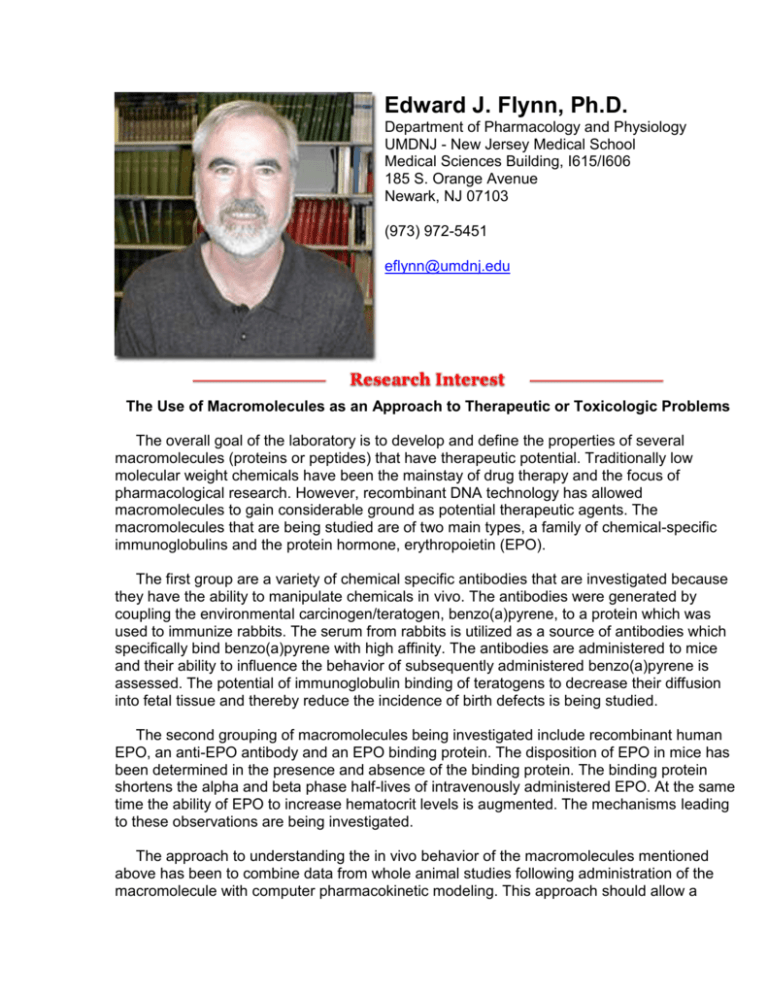
Edward J. Flynn, Ph.D. Department of Pharmacology and Physiology UMDNJ - New Jersey Medical School Medical Sciences Building, I615/I606 185 S. Orange Avenue Newark, NJ 07103 (973) 972-5451 eflynn@umdnj.edu The Use of Macromolecules as an Approach to Therapeutic or Toxicologic Problems The overall goal of the laboratory is to develop and define the properties of several macromolecules (proteins or peptides) that have therapeutic potential. Traditionally low molecular weight chemicals have been the mainstay of drug therapy and the focus of pharmacological research. However, recombinant DNA technology has allowed macromolecules to gain considerable ground as potential therapeutic agents. The macromolecules that are being studied are of two main types, a family of chemical-specific immunoglobulins and the protein hormone, erythropoietin (EPO). The first group are a variety of chemical specific antibodies that are investigated because they have the ability to manipulate chemicals in vivo. The antibodies were generated by coupling the environmental carcinogen/teratogen, benzo(a)pyrene, to a protein which was used to immunize rabbits. The serum from rabbits is utilized as a source of antibodies which specifically bind benzo(a)pyrene with high affinity. The antibodies are administered to mice and their ability to influence the behavior of subsequently administered benzo(a)pyrene is assessed. The potential of immunoglobulin binding of teratogens to decrease their diffusion into fetal tissue and thereby reduce the incidence of birth defects is being studied. The second grouping of macromolecules being investigated include recombinant human EPO, an anti-EPO antibody and an EPO binding protein. The disposition of EPO in mice has been determined in the presence and absence of the binding protein. The binding protein shortens the alpha and beta phase half-lives of intravenously administered EPO. At the same time the ability of EPO to increase hematocrit levels is augmented. The mechanisms leading to these observations are being investigated. The approach to understanding the in vivo behavior of the macromolecules mentioned above has been to combine data from whole animal studies following administration of the macromolecule with computer pharmacokinetic modeling. This approach should allow a detailed understanding of the fate of macromolecules and permit identification of novel targets for drug development . Pastino,G.M., Sultatos, L.G. and Flynn, E.J. Development and Application of a Physiologically-Based Pharmacokinetic Model for Ethanol in the Mouse. Alcohol and Alcoholism 31:365, 1996. Pastino, G.M., Flynn, E.J. and Sultatos, L.G. Genetic polymorphisms in ethanol metabolism: Issues and goals for physiologically based pharmacokinetic modeling. Drug and Chem. Toxicol., 1999, in press.
